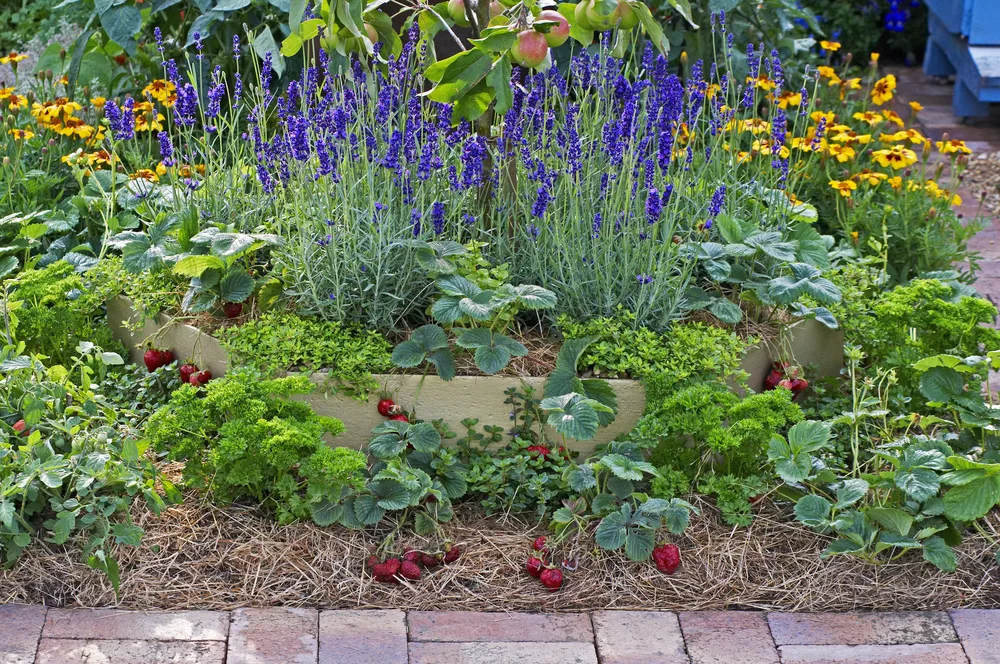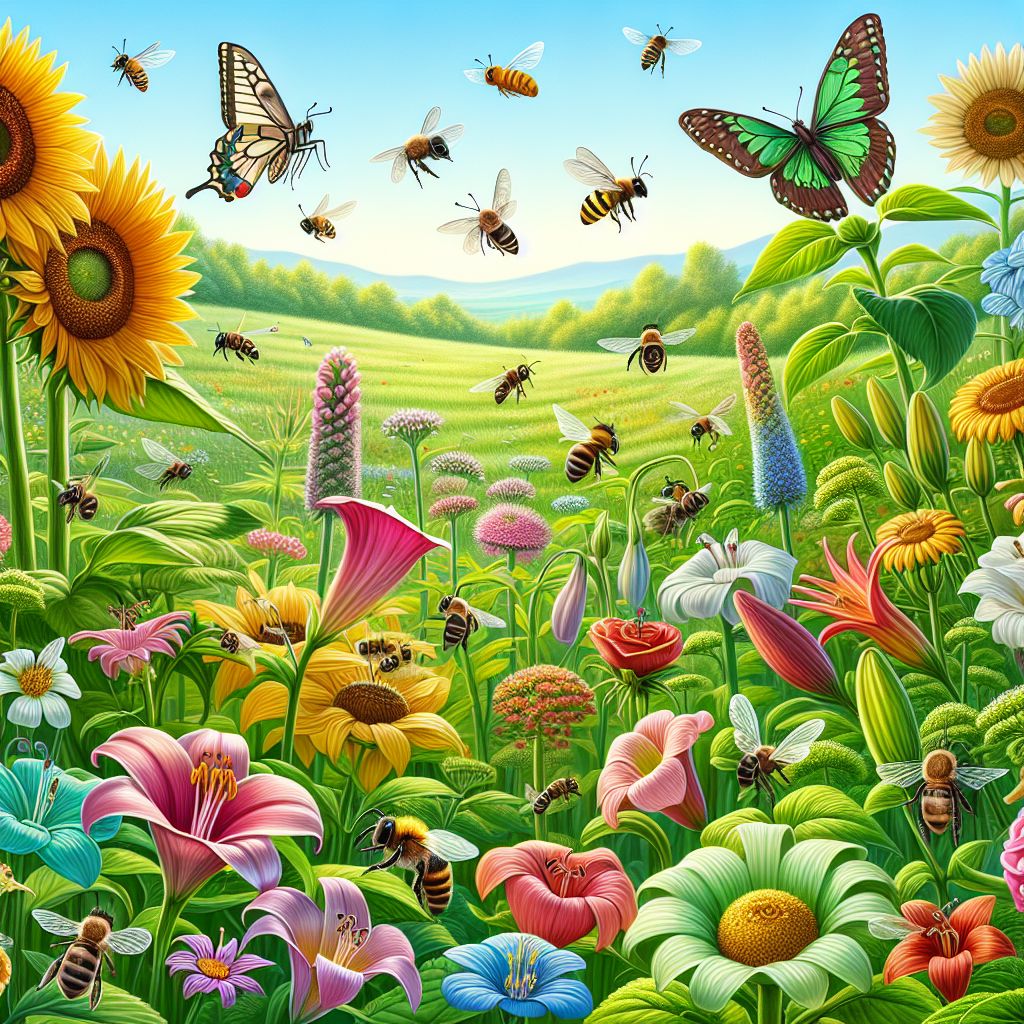Key Takeaways
-
Hand pollination in greenhouses can significantly increase fruit yield.
-
Simple tools like brushes and cotton swabs can be used for hand pollination.
-
Companion planting attracts natural pollinators, enhancing pollination success.
-
Understanding the role of wind and insects is crucial for effective pollination.
-
Creating a pollinator-friendly environment is key for a thriving fruit garden.
The Art of Hand Pollination in a Greenhouse
When you’re working with a controlled environment like a greenhouse, you’ve got a fantastic opportunity to take charge of pollination. Hand pollination isn’t just for the pros, it’s a straightforward technique that anyone can master. It’s all about transferring pollen from the male parts of the flower to the female parts. This can skyrocket your fruit production, especially when bees and other pollinators are scarce.
Tools of the Trade: Pollination Tools for the Gardener
You don’t need fancy equipment to hand pollinate. Here’s a quick list of what you’ll need:
-
A small paintbrush or cotton swab to transfer pollen.
-
A pair of scissors to snip open flowers if necessary.
-
A magnifying glass to see the flower parts more clearly, especially if you’re working with tiny flowers.
With these simple tools, you’re ready to take on the role of a pollinator!
Step-by-Step: Hand Pollinating for Higher Yields
Let’s break down the hand pollination process:
-
Identify the male and female flowers. The male flower typically has a pollen-covered anther, while the female flower has a stigma.
“Reproduction in Flowering Plants …” from www.nagwa.com
-
Dip your brush or swab into the male flower to collect the pollen.
-
Gently brush the pollen onto the stigma of the female flower.
-
Repeat this process for all the flowers you want to pollinate.
And that’s it! With a little patience and practice, you’ll see a noticeable increase in fruit production. For more detailed information, check out these greenhouse growing secrets, techniques, and tips.
Most importantly, timing is everything. Flowers are usually most receptive in the morning, so make that your go-to time for hand pollination. Besides that, keep your greenhouse environment stable, too much humidity can make pollen sticky and less viable.
Timing: Matching Bloom with Buzz
For pollination to be successful, timing is critical. The goal is to match the peak blooming period of your plants with the peak activity of pollinators.
This is when your plants’ flowers are most receptive to pollen, and when bees and other pollinating insects are actively foraging. Keep an eye on your plants and get to know their cycles. When you see flowers opening, that’s your cue to ensure all your pollination strategies are in place.
Bee Attraction Basics
Bees are some of the most efficient pollinators out there. Attracting them to your garden isn’t just good for the environment, it’s a strategic move for your fruit production. To attract bees, you’ll want to provide a variety of flowering plants that bloom at different times, ensuring a consistent food source for these busy workers.
Floral Buffets: Planting for Pollinators
Creating a floral buffet isn’t just about throwing a bunch of flowers together. It’s about planting strategically. Here’s how:
-
Choose a variety of flowers that bloom in succession throughout the growing season.
-
Include plants with different shapes, colors, and sizes to attract a variety of pollinators.
-
Plant in clusters to create a target-rich environment for bees.
By providing a continuous supply of nectar and pollen, you’re not just feeding the bees, you’re setting the stage for a fruitful harvest.
Remember, bees prefer sunny spots over shady ones, so place your pollinator plants in areas that get plenty of sunlight. Also, avoid using pesticides that can harm these beneficial insects.
Now, let’s look at an example of a well-designed pollinator garden:
“In my own garden, I’ve planted lavender, borage, and cosmos flowers alongside my vegetable patch. The bees can’t resist the variety, and my fruit plants are thriving because of the increased pollination.”

Creating such an environment not only supports the local ecosystem but also directly benefits your fruit yield.
The Importance of Habitat for Helper Insects
It’s not just about the flowers. Providing habitat for pollinators is equally important. This means leaving some areas of your garden a little wild, with logs, bare soil, and undisturbed patches that can serve as nesting sites for native bees and other beneficial insects. Think of it as setting up a hotel for insects right in your backyard.
Wind Wisdom: Harnessing Nature’s Breath
Wind plays a more significant role in pollination than you might think. Some plants, like grapes and kiwis, rely heavily on wind to transfer pollen between flowers. This is known as anemophily, and understanding it can help you optimize your garden layout for better pollination.
Understanding Anemophily in Your Fruit Garden
Anemophilous plants have flowers that are usually not flashy or scented because they don’t need to attract insects. Instead, they produce a lot of light, dry pollen that can be carried easily by the wind. To take advantage of this, place these plants in an area where they can catch a gentle breeze, which will help distribute the pollen.
Here’s what you need to know about boosting pollination in these plants:
-
They often have long stamens and pistils to catch the wind.
-
Their pollen is typically smooth and dry.
-
They may produce pollen at times of the day when the wind is strongest.
Observing your plants and the local wind patterns can give you clues on how to position them for optimal wind pollination. In your greenhouse, try and replicate the wind effect at the same time of day that it is blowing outside. You can use a fan to replicate the wind in your greenhouse.
Design Tips for Wind-Assisted Pollination
To harness the power of the wind, consider the following:
-
Space your wind-pollinated plants appropriately so the wind can move freely between them.
-
Plant in rows that run perpendicular to the prevailing wind direction.
-
Avoid creating wind blocks, like tall/divider fences or dense shrubberies, near these plants.
With these design tips, you’re allowing nature to do some of the work for you, leading to better pollination and, therefore, a more bountiful harvest.
The Organic Approach
Organic gardening practices are not just about avoiding chemicals, they’re about creating a balanced ecosystem in your garden. This balance helps to boost blossoms and attract bees, which are essential for pollination.
Natural Fertilizers to Boost Blossoms and Bees
Using natural fertilizers like compost, manure, or bone meal can provide your plants with the nutrients they need for healthy growth and abundant flowering. More flowers mean more opportunities for pollination. Plus, these organic options are better for the soil and the beneficial organisms that live in it.
When you feed the soil, you feed the plants, and in turn, you feed the pollinators. It’s a beautiful cycle that leads to a thriving garden.

Natural Fertilizers to Boost Blossoms and Bees
Optimal pollination starts with healthy plants, which come from fertile soil. Natural fertilizers, such as compost or fish emulsion, provide a slow-release feed that helps plants produce vibrant, nectar-rich flowers. These blooms attract a host of pollinators, from bees to butterflies, which are crucial for pollination. Here’s what you can do:
-
Mix compost into your soil at the start of the growing season to improve soil health.
-
Apply natural liquid fertilizers during the blooming period to give plants an extra boost.
-
Avoid chemical fertilizers that can harm beneficial insects and the environment.
Beneficial Bugs: Inviting Insect Allies to the Garden
Beyond bees, other beneficial bugs like ladybugs, lacewings, and hoverflies also contribute to pollination. They’re natural pest controllers too. Attract them by planting a diverse range of flora and maintaining a garden that provides shelter and food.
Here’s how you can create a haven for these allies:
-
Plant a variety of flowers that bloom at different times to provide a constant food source.
-
Set up insect hotels or leave dead wood and leaf litter around for shelter.
-
Avoid using pesticides, which can kill beneficial insects alongside the pests.
Fruit Plant Pollination FAQs
With so much information about pollination, it’s easy to get overwhelmed. Let’s address some common questions gardeners have to ensure you’re on the right track for a successful harvest.
Here are answers to some frequently asked questions about fruit plant pollination:
What is the most effective time of day for pollination?
The most effective time for pollination is usually in the morning when humidity is higher, and temperatures are cooler. This is when flowers are most receptive and insects are most active. However, this can vary depending on the plant species and local climate conditions.
How can I tell if my fruit plants have been pollinated effectively?
Signs of effective pollination include the formation of fruit after flowers have bloomed. If you see flowers dropping without fruit development, it could indicate inadequate pollination. Monitoring your plants regularly will help you spot these signs early on.
Can I pollinate fruit plants without the use of insects?
Yes, you can hand-pollinate fruit plants if insect activity is low or if you’re growing plants indoors. Use a small paintbrush or cotton swab to transfer pollen from male flowers to female flowers, mimicking the action of insects.
How does weather impact pollination and what can I do about it?
Weather plays a significant role in pollination. Rain can wash away pollen, while high winds can scatter it ineffectively. Conversely, a lack of wind can hinder pollination in wind-pollinated plants. To mitigate weather effects, provide shelter for insects on windy days and consider hand pollination during prolonged poor weather.
What are some common mistakes in fruit plant pollination?
Common mistakes include planting fruit plants too far apart, which makes it difficult for pollinators to reach all flowers, and using pesticides that kill pollinators. Another mistake is not providing a diverse habitat that supports a range of pollinators throughout the growing season.

